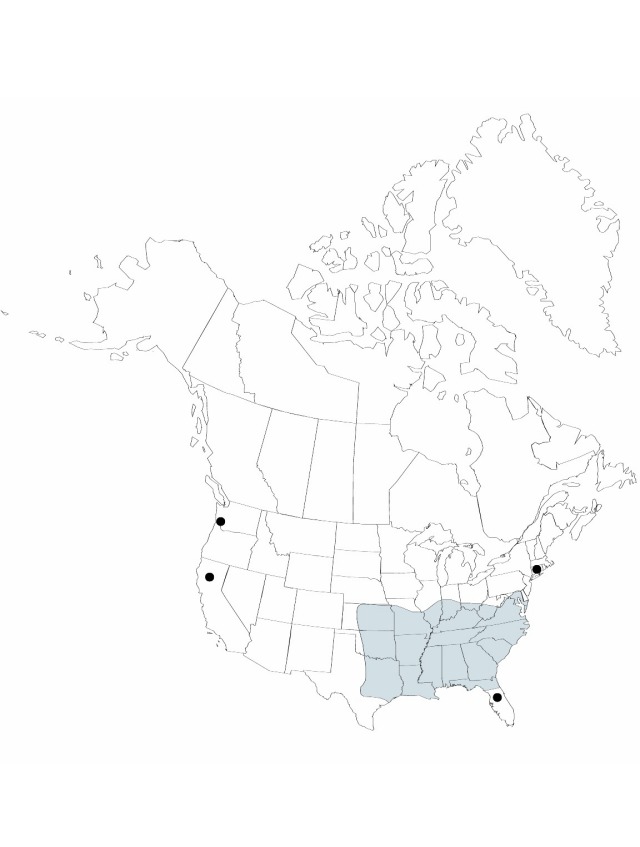Juncus diffusissimus
Proceedings of the Academy of Natural Sciences of Philadelphia 14: 9. 1862.
Herbs, perennial, cespitose, 2.5–6.5 dm. Culms erect, terete, 1–3 mm diam., smooth. Cataphylls 0–1, maroon or dark green, apex obtuse. Leaves: basal 1, cauline 2–3; auricles 1–2.1 mm, apex rounded, membranaceous; blade maroon or dark green, terete to compressed, 3–20 cm × 1–2.4 mm. Inflorescences terminal panicles of 30–70(–130), 5–20 cm, branches spreading; primary bract erect; ; heads (1–)2–10-flowered, hemispheric or narrower, 5–10 mm diam. Flowers: tepals green to straw-colored, lanceolate, apex acute; outer tepals (2–)2.6–3.2 mm; inner tepals (1.8–)2.3–3 mm; stamens 3, anthers 1/2–2/3 filament length. Capsules exserted, , straw-colored, 1-locular, linear-lanceoloid, 4–5.2 mm, apex acute, valves separating at dehiscence. Seeds oblong-ellipsoid, 0.3–0.4 mm, not tailed; body clear yellow-brown.
Phenology: Fruiting summer.
Habitat: In soft mucky substrates, marshy shores, sloughs, occasionally in wet wooded places, often in shallow water, commonly abundantly colonizing wet, sandy- alluvial outwash in ditches and clearings
Elevation: 10–1000 m
Distribution

Ala., Ark., Calif., Conn., Fla., Ga., Ill., Ind., Kans., Ky., La., Md., Miss., Mo., N.C., Ohio, Okla., S.C., Tenn., Tex., Va., Wash., W.Va., probably South America.
Discussion
Selected References
None.